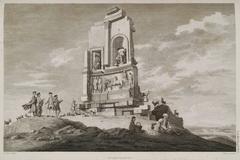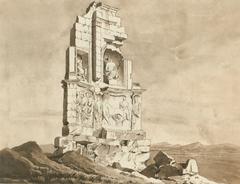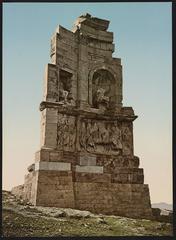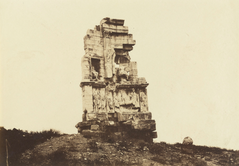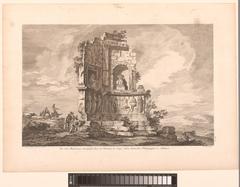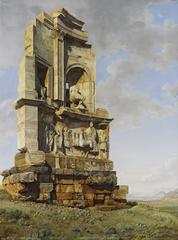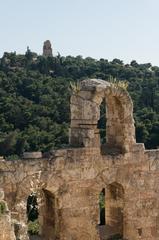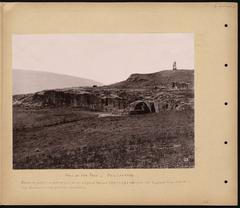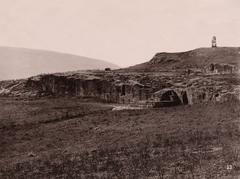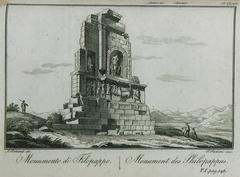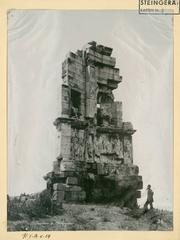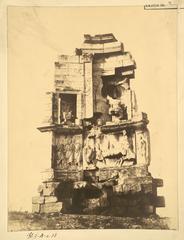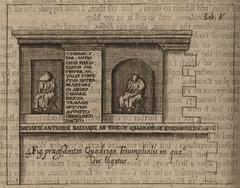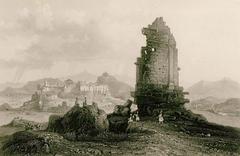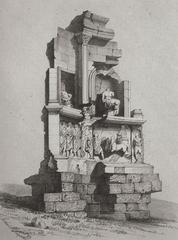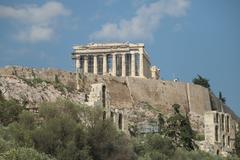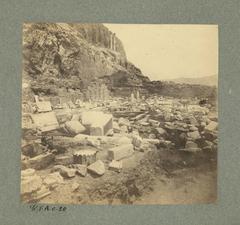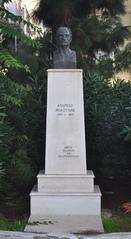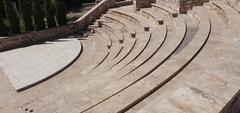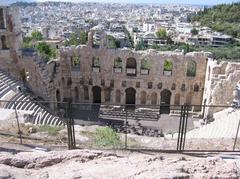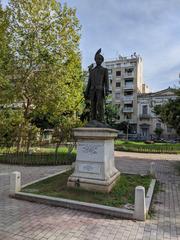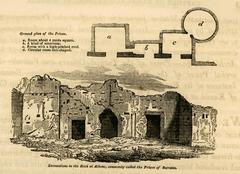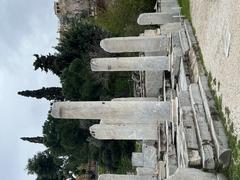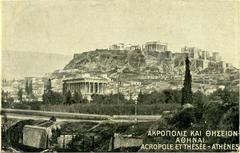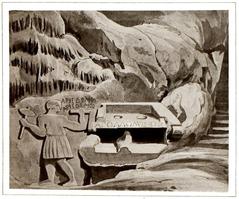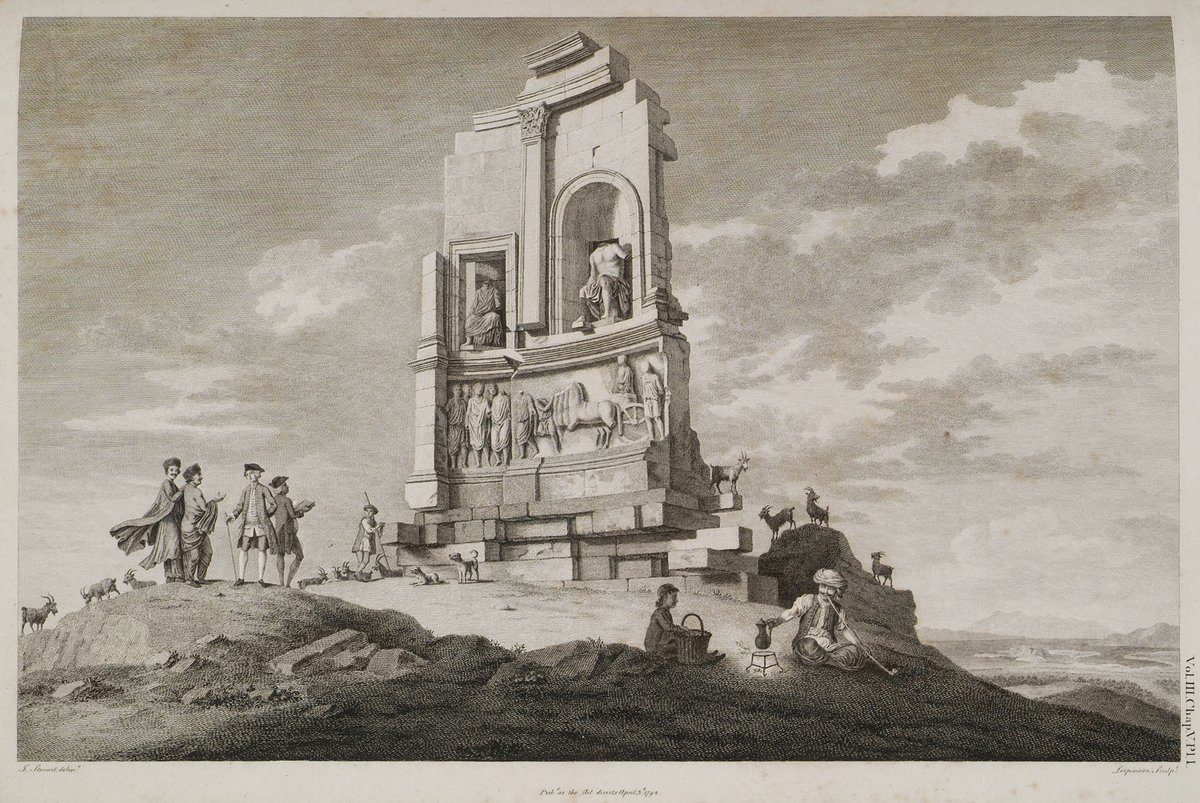
Philopappos Monument Visiting Hours and Tickets: Complete Guide
Published Date: 18/07/2024
Introduction to Philopappos Monument
The Philopappos Monument, also known as the Monument of Philopappos, stands as a prominent historical landmark atop Philopappos Hill in Athens, Greece. Erected between 114 and 116 AD, this impressive structure honors Gaius Julius Antiochus Epiphanes Philopappos, a prince from the Kingdom of Commagene and a celebrated benefactor of Athens. The monument not only serves as a testament to the deep cultural exchange between Greece and Rome but also offers breathtaking panoramic views of the city, including the iconic Acropolis. Visitors to the Philopappos Monument can marvel at its architectural grandeur, which seamlessly blends Roman and Greek elements. The monument’s strategic location on Philopappos Hill underscores its significance, symbolizing Philopappos’s elevated status and his lasting legacy in Athenian history (Athens Guide).
Table of Contents
- [Introduction](#introductionintroduction-to-philopappos-monument)
- [History and Significance](#history-and-significancehistory-and-significance)
- [Construction and Dedication](#construction-and-dedicationconstruction-and-dedication)
- [Historical Context](#historical-contexthistorical-context)
- [Significance and Symbolism](#significance-and-symbolismsignificance-and-symbolism)
- [Later History](#later-historylater-history)
- [Architectural Design and Features](#architectural-design-and-featuresarchitectural-design-and-features)
- [Structure and Materials](#structure-and-materialsstructure-and-materials)
- [Architectural Elements](#architectural-elementsarchitectural-elements)
- [Design Elements and Symbolism](#design-elements-and-symbolismdesign-elements-and-symbolism)
- [Visitor Information](#visitor-informationvisitor-information)
- [Visiting Hours](#visiting-hoursvisiting-hours)
- [Tickets](#ticketstickets)
- [Guided Tours](#guided-toursguided-tours)
- [Travel Tips](#travel-tipstravel-tips)
- [Best Time to Visit](#best-time-to-visitbest-time-to-visit)
- [What to Bring](#what-to-bringwhat-to-bring)
- [Safety Tips](#safety-tipssafety-tips)
- [Nearby Attractions](#nearby-attractionsnearby-attractions)
- [Acropolis](#acropolisacropolis)
- [Parthenon](#parthenonparthenon)
- [Ancient Agora](#ancient-agoraancient-agora)
- [Accessibility](#accessibilityaccessibility)
- [FAQs](#faqsfaqs)
- [Conclusion](#conclusionconclusion)
- [References and Further Reading](#references-and-further-readingreferences-and-further-reading)
History and Significance
Construction and Dedication
The monument was erected between 114 and 116 AD to honor Gaius Julius Antiochus Epiphanes Philopappos, a prince from the Kingdom of Commagene (Athens Guide). Philopappos was a renowned benefactor and a popular figure in Athens. After his death in 116 AD, the Athenian people, along with his sister Julia Balbilla, commissioned this grand monument in his memory.
Historical Context
The Philopappos Monument stands as a testament to the complex relationship between Athens and Rome during the Roman Empire. While under Roman rule, Athens retained a degree of autonomy and was admired for its cultural heritage. The monument’s design, incorporating both Greek and Roman elements, reflects this dynamic. The use of Pentelic marble, a material synonymous with Athenian architecture, alongside Roman funerary traditions, showcases the blending of these two distinct cultures.
Significance and Symbolism
The monument’s prominent location on Philopappos Hill, overlooking the ancient city, underscores its significance. It served as a constant reminder of Philopappos’ generosity and his close ties to Athens. The monument’s grandeur and elaborate design also symbolize the wealth and influence of Roman-era Athens.
Later History
Over the centuries, the monument has withstood the test of time, enduring natural elements and historical upheavals. During the Ottoman period, the monument was mistakenly attributed to a mythical Athenian woman named “Philopappa,” who was said to have mourned her lover, Pausanias, from the hilltop. This misattribution led to the hill being named “Philopappos Hill.”
Architectural Design and Features
Structure and Materials
The monument is a two-story structure built with Pentelic marble and follows the form of a funerary monument common during the Roman period. The foundation and core of the structure are composed of solid concrete, a material the Romans revolutionized and employed extensively in their monumental architecture.
Architectural Elements
- The Lower Section: This section features a frieze depicting Philopappos as a Roman magistrate, riding in a chariot as part of a triumphal procession. This imagery highlights his high status within the Roman Empire.
- The Upper Section: This section houses the statues of three men seated in niches:
- Philopappos: He is depicted on the left, larger than the other two figures, emphasizing his importance. He is dressed as a Roman consul, further signifying his position and power.
- King Antiochus I: The figure on the right is believed to be Philopappos’ grandfather, King Antiochus I of Commagene.
- The Central Figure: The identity of the central figure remains a subject of debate among historians. Some believe it to be Seleucus I Nicator, the founder of the Seleucid Empire, from whom Philopappos claimed descent.
- The Inscription: A prominent inscription in Greek adorns the monument, praising Philopappos for his generosity and contributions to Athens. It reads: “To Philopappos, son of Epiphanes, of the deme of Besa.”
Design Elements and Symbolism
Beyond its structural components, the Philopappos Monument is replete with design elements that offer insights into its historical context and the life of the man it honors. The monument’s inscription, prominently displayed on the facade, provides valuable information about Philopappos, his lineage, and his political career. The sculptures that once adorned the monument’s niches and pediment served as visual narratives, conveying messages about Philopappos’s life, achievements, and status.
Visitor Information
Visiting Hours
The Philopappos Monument is generally open to visitors from early morning until sunset. It’s advisable to check the official website for the most accurate visiting hours.
Tickets
There is no entrance fee to visit the Philopappos Monument, making it a great free attraction in Athens.
Guided Tours
Various guided tours are available that include the Philopappos Monument as part of a broader exploration of Athens’ historical sites.
Travel Tips
Best Time to Visit
Early morning or late afternoon are ideal times to visit, as the temperatures are cooler and the lighting is perfect for photography.
What to Bring
Comfortable walking shoes, water, and sun protection are recommended, especially during the hotter months.
Safety Tips
Stay on marked paths and be cautious of the uneven terrain to avoid accidents.
Nearby Attractions
Acropolis
Just a short walk from the Philopappos Monument, the Acropolis is a must-visit historical site in Athens.
Parthenon
Located on the Acropolis, the Parthenon is an iconic symbol of ancient Greece.
Ancient Agora
Another nearby attraction, the Ancient Agora offers a glimpse into the daily life of ancient Athenians.
Accessibility
Access
The path to the Philopappos Monument includes some uneven terrain and steps, which may be challenging for visitors with mobility issues.
Parking
Limited parking is available near the entrance to Philopappos Hill.
FAQs
- What are the visiting hours for the Philopappos Monument? The monument is generally open from early morning until sunset.
- Is there an entrance fee for the Philopappos Monument? No, visiting the Philopappos Monument is free of charge.
- Can I take a guided tour of the Philopappos Monument? Yes, guided tours are available and often include other historical sites in Athens.
Conclusion
The Philopappos Monument is a remarkable historical site that offers visitors a unique glimpse into the ancient world and the cultural exchanges between Greece and Rome. Whether you’re a history enthusiast or simply looking for a scenic spot to explore, this monument is well worth a visit. Don’t miss the chance to explore one of Athens’ most significant landmarks and experience the rich history it represents.
References and Further Reading
- Explore the Philopappos Monument - History, Visiting Hours, and Tickets. Athens Guide
- Discover the Philopappos Monument - Architectural Marvels, Visiting Hours, and Tickets. Athens Guide
- Philopappos Monument - Visiting Hours, Tickets, and Tips for a Memorable Experience in Athens. Athens Guide
